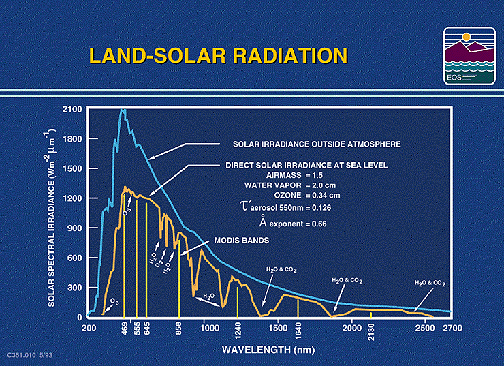

On striking the land or ocean surface (ground targets) (or atmospheric targets - air, moisture, clouds), the transmitted radiation (technically, termed irradiance) will be partitioned into three modes of energy-interaction response: (1) transmittance - some radiation will penetrate into certain surface media such as water; (2) absorptance - some radiation will be absorbed through electron or molecular reactions within the medium encountered; a portion of the energy incorporated can then be re-emitted (as emittance), largely at longer wavelengths, so that some of the sun's radiant energy engages in heating the target giving rise then to a thermal response; (3) reflectance - some radiation will, in effect, be reflected (and scattered) away from the target at different angles (depending in part on surface "roughness" as well as on the angle of the sun's direct rays relative to surface inclination), and some being directed back on line with the observing sensor. Most remote sensing systems are designed to monitor reflected radiation.
Code 935, Goddard Space Flight Center, NASA
Written by: Nicholas M. Short, Sr. email: nmshort@epix.net
and
Jon Robinson email: Jon.W.Robinson.1@gsfc.nasa.gov
Webmaster: Bill Dickinson Jr. email: rstwebmaster@gsti.com
Web Production: Christiane Robinson, Terri Ho and Nannette Fekete
Updated: 1999.03.15.